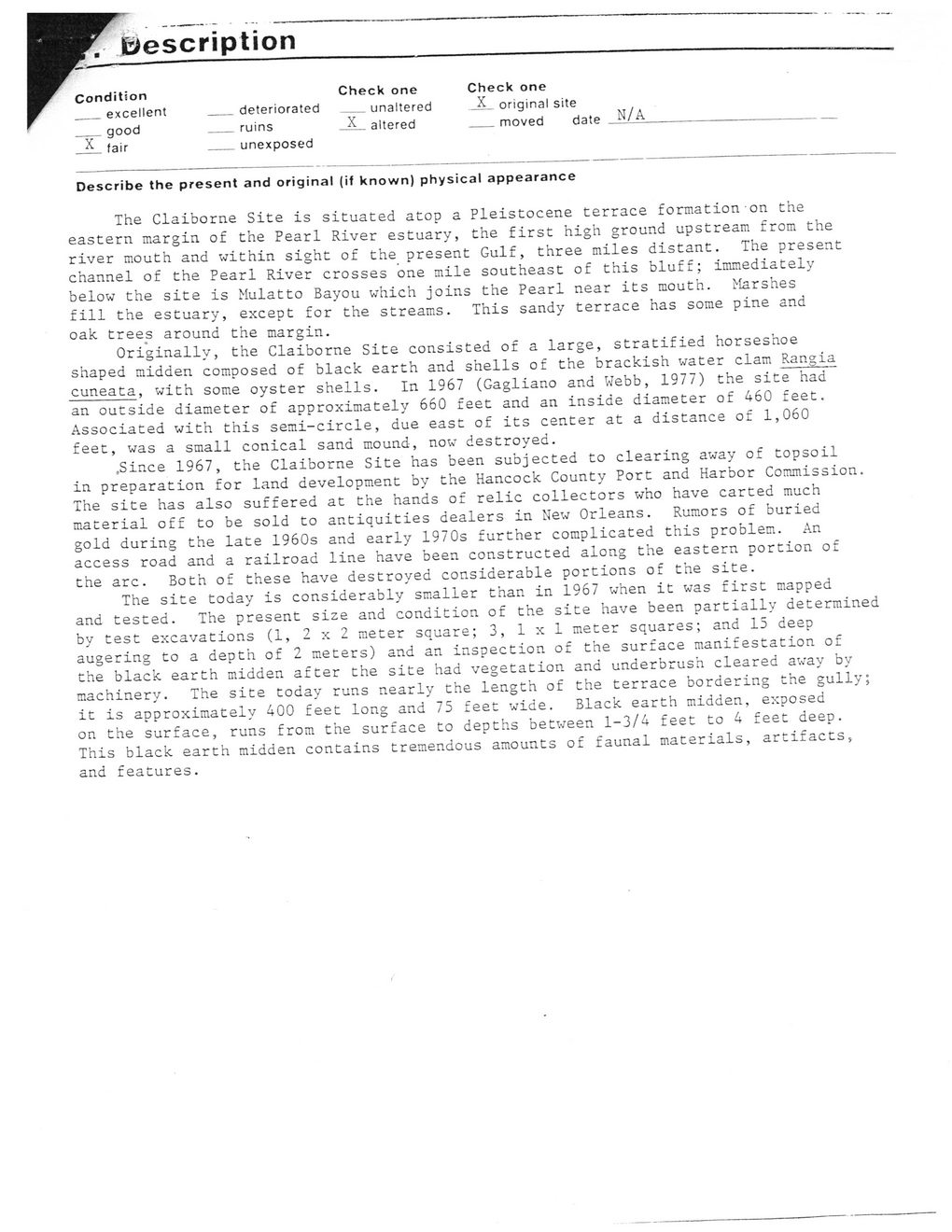This text was obtained via automated optical character recognition.
It has not been edited and may therefore contain several errors.
. description Condition ___ excellent ____good X fair ____deteriorated ____ruins ____ unexposed Check one ___unaltered _JL_ altered Check one JL original site ____moved date N/A_ Describe the present and original (if known) physical appearance The Claiborne Site is situated atop a Pleistocene terrace formation on the eastern margin of the Pearl River estuary, the first high ground upstream from the river mouth and within sight of the present Gulf, three miles distant. The present channel of the Pearl River crosses one mile southeast of this bluff; immediately below the site is Mulatto Bayou which joins the Pearl near its mouth. Marshes fill the estuary, except for the streams. This sandy terrace has some pine and oak trees around the margin. Originally, the Claiborne Site consisted of a large, stratified horseshoe shaped midden composed of black earth and shells of the brackish water clam Rangia cuneata, with some oyster shells. In 1967 (Gagliano and Webb, 1977) the site had an outside diameter of approximately 660 feet and an inside diameter of 460 feet. Associated with this semi-circle, due east of its center at a distance of 1,060 feet, was a small conical sand mound, now destroyed. .Since 1967, the Claiborne Site has been subjected to clearing away of topsoil in preparation for land development by the Hancock County Port and Harbor Commission. The site has also suffered at the hands of relic collectors who have carted much material off to be sold to antiquities dealers in New Orleans. Rumors of buried gold during the late 1960s and early 1970s further complicated this problem. An access road and a railroad line have been constructed along the eastern portion of the arc. Both of these have destroyed considerable portions of the site. The site today is considerably smaller than in 1967 when it was first mapped and tested. The present size and condition of the site have been partially determined by test excavations (1, 2x2 meter square; 3, 1 x 1 meter squares; and 15 deep augering to a depth of 2 meters) and an inspection of the surface manifestation of the black earth midden after the site had vegetation and underbrush cleared away by machinery. The site today runs nearly the length of the terrace bordering the gully; it is approximately 400 feet long and 75 feet wide. Black earth midden, exposed on the surface, runs from the surface to depths between 1-3/4 feet to 4 feet deep. This black earth midden contains tremendous amounts of faunal materials, artifacts, and features.

Claiborne Historical Site Guerin-Giardino-(051)